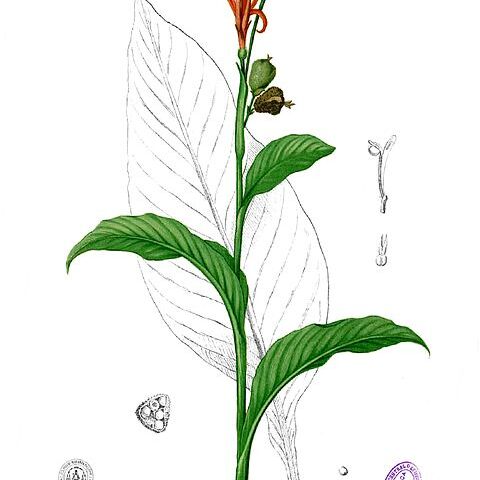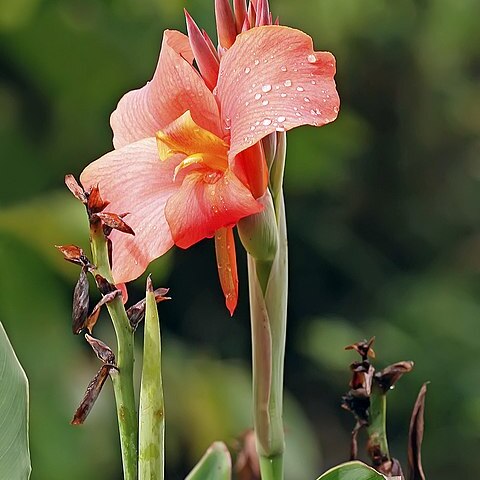Mediocre to fairly massive, leafy, rhizomatous herbs; leaves spiral, relatively large, with an eligulate sheath; inflorescence racemiform or paniculate, bracteate, the bracts usually subtending a cicinnus of 2 more or less showy, usually brightly colored perfect flowers; sepals 3, free, more or less foliaceous or petalaceous, es-sentially equal; petals 3, nearly equal, more or less connate at the base; fertile stamen 1, petaloid, bearing a solitary marginal anther, more or less connate at the base with the somewhat petaloid style, a petaloid anterior (labellum) and 2-3 showy posterior staminodia; ovary inferior, 3-celled, conspicuously warty or spiny-fimbriate, containing numerous ovules; fruit a rather large warty or spiny-fimbriate capsule finally opening by the collapse of the pericarp; seeds round and very hard.
Characters of the family. Spp. c. 55, probably all native to tropics and subtropics of America but some spp. long established in the Old World.
Morphological characters and geographic distribution are the same as those for the family.
Description as for the family.


